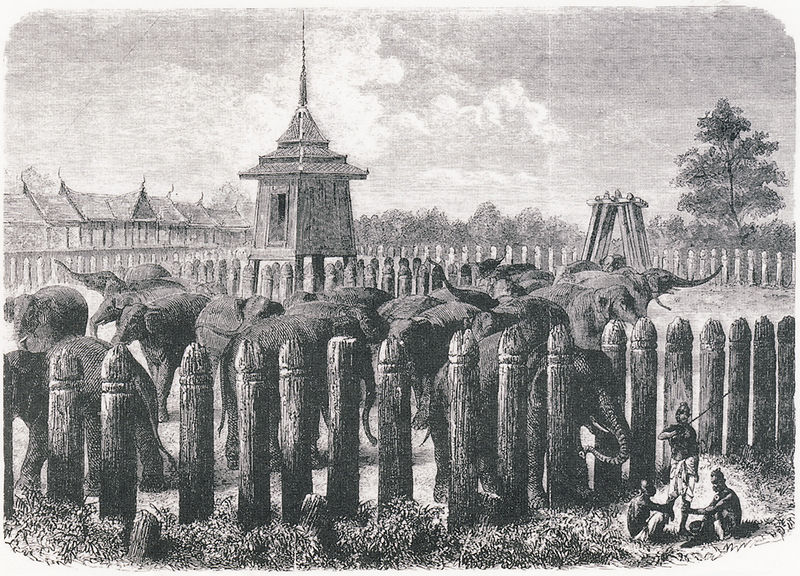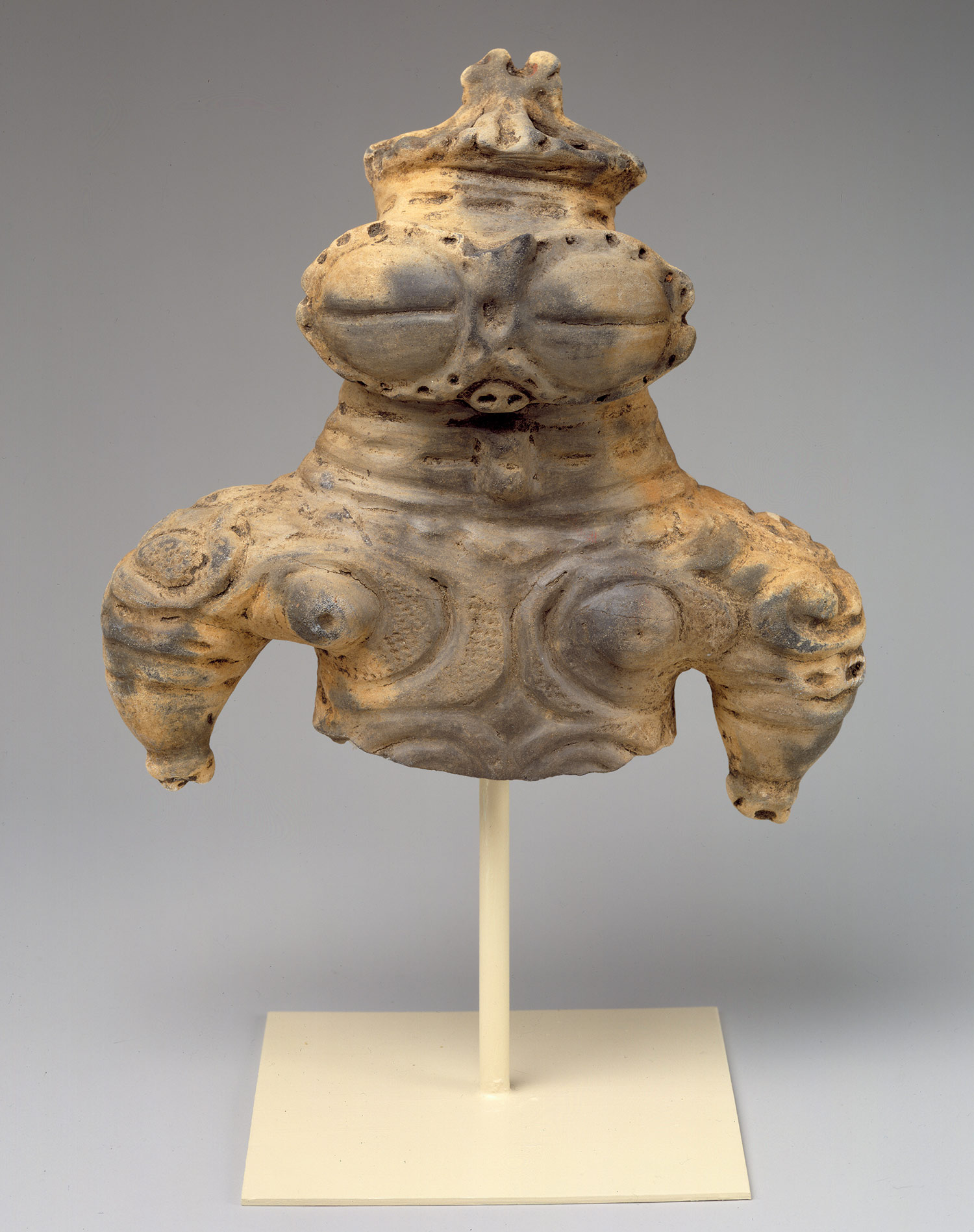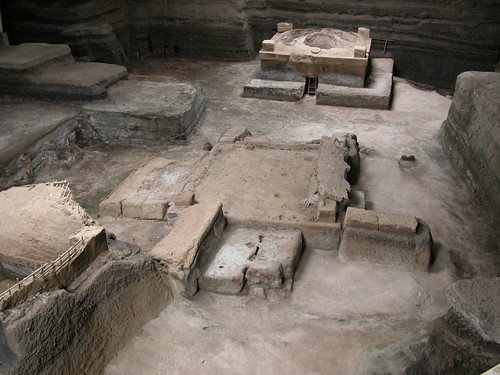I have noticed that there is a trend in getting sleeve tattoos. Back in the days, and by days I mean in Iron Age Europe, such tattoos could easily be an identifier of rank. Not only that, but if were are lucky enough, they can actually last thousands of years after a person death. Of course that would require a very specific environmental condition.
Science, Southeast Asia, Gay Stuff, Video Games, and Pop Culture all tied up in an occasionally German mess...
Posts mit dem Label Archaeology werden angezeigt. Alle Posts anzeigen
Posts mit dem Label Archaeology werden angezeigt. Alle Posts anzeigen
Sonntag, 10. Juni 2012
Montag, 4. Juni 2012
Archaeological site of the day
Plain of Jars, Xieng Khouang, Laos
The Plain of Jars is a megalith site dating from 500 BCE to 500 CE.
Samstag, 26. Mai 2012
Samstag, 28. April 2012
Dienstag, 17. April 2012
Indigenous people of the Arctic
The Arctic region encompass eight nation states: Canada, Finland, Greenland (Denmark), Iceland, Norway, Russia, Sweden, and the United States. The geography and climate condition of the region can be described as foreboding, invoking an imagery of a cold and bitter landscape. Yet, people not only inhabit in this area, they thrive – contributing to a rich culture built on the relative isolation of the cold climate.
The Saami people are traditionally nomadic herders who lived in the northern reaches of Scandinavia. Having been traditionally isolated from the affairs of the rest of Europe, major attempts to include assimilate them occurred in the 17th century – comparatively late in regards to other European groups. Historically, Saami lands contained scattered ritual objects and sacrificial sites symbolizing a connection between the people and the landscape. Most of these sites fell into obscurity upon efforts to convert the Saami people into Lutheranism. Even so, the symbolism of these sites isn’t completely.
The Nivkhs lives in the far east of Russia. They speak a paleosiberian language – a group of languages not related to each other than being influenced by Tungusic and Turkic languages. It is theorized that they have been influential in the peopling of Manchuria, Korea and Japan as evidence of their cultural settlements have been found in those region. It is quite possible they had extensive interactions with the Ainu, another isolate group from Japan, though much of the data for that is lost. Like the Saami they are semi-nomadic, having settlements for winter and summer.
Aleuts are a significant group archaeologically, because they provide the model to how the peopling of the Americas occurred. The Aleuts are indigenous to Russia and Alaska share the same language family as the Inuit of the Americas and the Yupik that inhabits similar territories. Along with increased archaeological data, it helps supports the theory that the first people who arrived in the America did so from Asia during the last ice age. One interesting aspect of the cultures of these groups is that gender roles were permeable. Depending on conditions, it is not uncommon for the people to switch gender roles to favor their survival.
Icelanders are the indigenous people of Iceland and its main ethnic group. They are a Germanic people who speak the Nordic branch of the Germanic language. Due to their relative isolation from other Germanic groups, Icelandic reverted some of its Germanic sounds back to its Indo-European roots. Iceland provides us with the most complete source of Nordic Mythology written by Christian monks after the conversion of the islander. Despite conversion, there are still strong aspects of Norse belief in Iceland. It is estimated that half of all Icelanders still consider that elves might exists, for examples. Being short on biodiversity did not stop Icelander from expanding into agriculture and fishing. Indeed all but one mammal in Iceland were introduced by humans for agricultural purposes.
Late 9th century photo of Saami villagers
Photo of Nivkh men
Aleut dancers
Turf houses in Iceland
Labels:
Alaska,
Anthropology,
Archaeology,
Canada,
Culture,
Finland,
Iceland,
Norway,
Russia,
Sweden
Mittwoch, 11. April 2012
Today in archaeology
A common sight in Angkor temples. What is it? It's a lingam on a yoni. What's that, you ask? It's a sacred representation of the infinity of Shiva, the primary deity in most Angkor temple prior to the conversion of the Khmers into Mahayana then Theravada Buddhism. You want a simpler explanation?
It's a cock (lingam) penetrating a vagina (yoni).
Montag, 9. April 2012
42000 year-old painting
 The oldest known human painting is from Cueva de Nerja, in Spain, painted some 42000 years ago. Of course, traditions of art may have gone back further, probably done on wood and bones and didn't last. What's most interesting is that these were done by Neanderthals, not Homo Sapiens. It takes down the idea that art was a sudden invention that just happened in the Aurignacian period, which is still a commonly believed misconception.
The oldest known human painting is from Cueva de Nerja, in Spain, painted some 42000 years ago. Of course, traditions of art may have gone back further, probably done on wood and bones and didn't last. What's most interesting is that these were done by Neanderthals, not Homo Sapiens. It takes down the idea that art was a sudden invention that just happened in the Aurignacian period, which is still a commonly believed misconception.Via Gizmodo
Mittwoch, 4. April 2012
Grid map of Teotihuacan

Teotihuacan is an enigma of sorts. For a site of it's size and grandeur, we still haven't completely understood who the Teotihuacanos were. We know it's citizenry was cosmopolitan, consisting of the locals, Oaxacan, Mayans, and other surrounding ethnicity. The city is analogous to how some American cities, such as Detroit, are divided among ethnic groups. We do know about the daily lives of it's citizenry, thanks to many surviving depictions of them and we do know that they greatly influenced surrounding civilizations.
Sonntag, 1. April 2012
On the appearance of civilizaiton.
It must be the lack of sleep and coffee that's gotten me so jittery and crotchety. It's not usual for one to wake up in the morning cursing at their dreams for obvious intellectual laziness. Or I suppose it is if you stayed up until 4 AM killing hagravens and Foresworn on top of an ancient Nord ruin.

So I wake up this morning chastising myself because for some reason while in my dream I thought "Who built these ruins? They're so advance and just came out of nowhere". Damn it boy! You're an archæologist. You know goddamn well that's a stupid question. Civilizations don't come out of nowhere. They aren't just spontaneous. My problem with my in-dream reasoning is that it leads to presuppositions and it's intellectually lazy. It leads to presuppositions because when trying to rationalize the idea of "who built this advance civilization", the almost inevitable assumption is that something supernatural/out-worldly did it or that a civilization we're more familiar with did it. Case in point:


Now here's where the intellectually laziness comes in. The Nord ruins in Skyrim were already well explained in the history of the Elder Scrolls. Ysgramor lead the first humans out of Atmora to occupy Tamriel. They built the places. You would know that if read up on the materials ahead of time (some of which are available in-game.) It's also intellectually lazy to assume aliens created any of our modern civilization. You're explaining away a problem rather than doing the proper research. At the very least you should consider the more logical explanations. For Angkor, there existed ruins that dated before them namely Funan ruins, whose existence is recorded in both stonework and Chinese writings (in Oc Eo). As for why the current Khmers at the time of French Colonialism were not building large stone monuments: The Khmers underwent religious change from Hindu and Mahayana Buddhism to Theravada Buddhism. The new religion was not so demanding of their temples (though state leaders did build large temple to show their power, such as those at Udong, in modern Kandal Province, Cambodia.) More over, war with Ayutthaya (pictured above) sacked national resources. The kings no longer had the power to demand the peasant class to build as much as the Angkor kings did. The same goes for the example provided. The Olmecs didn't just appear. There were already numerous cultures predating the Olmec. The colossal heads by no means reflect realistic human heads and therefore couldn't be influenced by Nubians or other east African civilization (and fails completely anyway since the "typical" physical features of the Nubians and their descendants looked nothing like those heads). The superficial similarities between the pottery in the Andes and Jōmon (pre-Classical Japan) are just that - superficial. Anyone who studied those cultures can tell the difference between a Haniwa and Moche pot. The whole idea of the Americas being settle by Semitic people just blatantly ignores everything.

It's intellectually lazy because you're failing to think it through. You're failing to do the research. But it's all to common isn't it? I make archæological assumption all the time and most of us don't even know to question them. Some are so ingrained, we don't even see what's wrong because others may not see what's wrong. (Gender is one such concept where that happens.) So as I finish this noon with a strong cup of God-know-how-old coffee, I'll sit and hope people don't make the same bad thinking while awake that I did while asleep.

The feeling is mutual.

Nothing says authority like a poorly skilled hairdresser and a History Channel logo.
Ah History Channel - the only actual history covered is all about Hitler. But I've seems other reasoning that are just as bad. In the 19th century french explorer Henri Mouhot "rediscovered" the Angkor ruins in Cambodia, and his immediate reaction was similar to my dreams. (How he managed to rediscovered something that wasn't really lost is beyond me. The locals knew of the temples.) He was in disbelief of how grand the temple complex were. He could not reason with how advanced the temples seemed with how "backward" the locals were. And this lead to a subtle assumption: White(ish) people made it, because to Mouhot and many other people at the time, Western Europeans were the only capable of such feats. Presuppositions! And this has been used by all sorts of people: Some claim the civilizations of the Andes came from Japan because the vessels "looked similar". Some claim Nubians created the Olmec because of the facial features of the colossal head. Early British scholars assumed the creators of Great Zimbabwe were of Caucasian stock. Some believe the whole of the Americas were populated by Semitic people.

And for no reason, here's some subtle 18th century racism!
Now here's where the intellectually laziness comes in. The Nord ruins in Skyrim were already well explained in the history of the Elder Scrolls. Ysgramor lead the first humans out of Atmora to occupy Tamriel. They built the places. You would know that if read up on the materials ahead of time (some of which are available in-game.) It's also intellectually lazy to assume aliens created any of our modern civilization. You're explaining away a problem rather than doing the proper research. At the very least you should consider the more logical explanations. For Angkor, there existed ruins that dated before them namely Funan ruins, whose existence is recorded in both stonework and Chinese writings (in Oc Eo). As for why the current Khmers at the time of French Colonialism were not building large stone monuments: The Khmers underwent religious change from Hindu and Mahayana Buddhism to Theravada Buddhism. The new religion was not so demanding of their temples (though state leaders did build large temple to show their power, such as those at Udong, in modern Kandal Province, Cambodia.) More over, war with Ayutthaya (pictured above) sacked national resources. The kings no longer had the power to demand the peasant class to build as much as the Angkor kings did. The same goes for the example provided. The Olmecs didn't just appear. There were already numerous cultures predating the Olmec. The colossal heads by no means reflect realistic human heads and therefore couldn't be influenced by Nubians or other east African civilization (and fails completely anyway since the "typical" physical features of the Nubians and their descendants looked nothing like those heads). The superficial similarities between the pottery in the Andes and Jōmon (pre-Classical Japan) are just that - superficial. Anyone who studied those cultures can tell the difference between a Haniwa and Moche pot. The whole idea of the Americas being settle by Semitic people just blatantly ignores everything.

Sometimes I feel like I'm talking to Patrick Starfish when I try to pass those points to others
It's intellectually lazy because you're failing to think it through. You're failing to do the research. But it's all to common isn't it? I make archæological assumption all the time and most of us don't even know to question them. Some are so ingrained, we don't even see what's wrong because others may not see what's wrong. (Gender is one such concept where that happens.) So as I finish this noon with a strong cup of God-know-how-old coffee, I'll sit and hope people don't make the same bad thinking while awake that I did while asleep.
Labels:
Andes,
Anthropology,
Archaeology,
Cambodia,
Japanese,
Olmec,
Skyrim,
Video Games
Mittwoch, 6. Oktober 2010
Montag, 4. Oktober 2010
Archäologie

Sometimes it's easy to assume that a large tomb is a that of a king or a male ruler. Because of our current culture, we tend to associate the ruling class with men. It's all part of our blindness to the privileges we give to masculinity. However, through out history, men did not have the monopoly on power.
The Silla Kingdom of the Three Kingdoms period of Korea, was one of the countries vying for supremacy on the Korean peninsula. It's was largely thought that the tombs left behind by Silla was of male rulers. However one of the tomb has been argue to be a female co-ruler based on historical accounts as well as the images and goods left in the tombs.
The assumption that the tombs of the rulers were all male is an example of how our ideology can bias archaeology. We assumed that the Silla rulers were all men because we falsely correlated power with masculinity.
Sonntag, 3. Oktober 2010
Archäologie Lagen
Freitag, 24. September 2010
Sonntag, 12. September 2010
Samstag, 28. August 2010
Dienstag, 17. August 2010
Was Lucy a Butcher?

New bones found suggest that tool use has started 800000 years earlier than we had thought.
Early human ancestors may have been using tools about 800,000 years earlier
than thought, according to a new study based on newfound bone
evidence—prehistoric leftovers linked to the famed "Lucy"
fossil's species.
The discovery suggests, to at least one scientist, that
tool use may extend as far back as five million years ago, to the last common
ancestor of chimps and humans.
Samstag, 24. Juli 2010
Donnerstag, 22. Juli 2010
Boy, the ancients must have been bored

Via Livescience,
Behold the ancient dildo found in Sweden :
Last week, an excavation in Sweden turned up an object that bears the
unmistakable look of a penis
carved out of antler bone. Though scientists can't be sure exactly what this
tool was used for, it's hard not to leap to conclusions.
Now for me to sound like a third grader: That's small!
Archäologie Lagen
Montag, 12. Juli 2010
Cyber Bobanpak
Abonnieren
Posts (Atom)



















